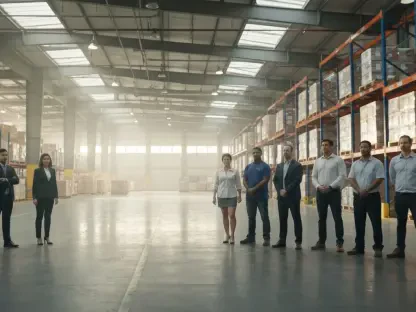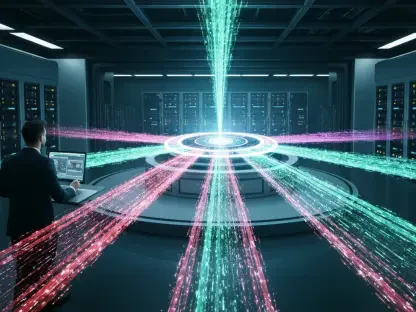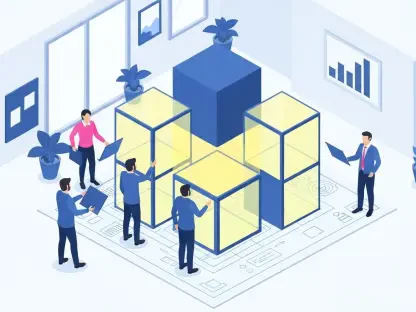In a world where big data and cloud services are transforming industries, Chloe Maraina stands out as a visionary in data science and business intelligence. Her expertise in creating compelling visual narratives from complex datasets has positioned her as a leading thinker in data management and integration. Today, she shares insights on the collaborative efforts in cloud computing and mainframe modernization, particularly the roles of major players like Kyndryl, AWS, and Google Cloud in reshaping the digital landscape.
Could you explain the collaboration between Kyndryl and AWS for mainframe migration?
The collaboration between Kyndryl and AWS aims to provide enterprises with new possibilities for integrating mainframe applications with the AWS Cloud. By utilizing the AWS Transform package, they offer a service that analyzes complex mainframe codebases. They do this by decoupling these systems into modular domains and converting applications to modern architectures like Java, which facilitates easier migration into the cloud environment. This partnership leverages AWS’s vast experience in mainframe modernization, extending their technical prowess to enterprises seeking to modernize their workloads efficiently.
What is the AWS Transform package, and how does it aid in modernizing mainframe workloads?
The AWS Transform package is a transformative tool that leverages deep learning models and AI agents to simplify the modernization of mainframe workloads. It assists in interpreting, decoupling, and converting legacy IBM z/OS applications to contemporary platforms, such as Java. This package is specifically designed to address the intricate nature of mainframe systems by offering a structured plan that maintains the functional equivalence of applications while transitioning them to the cloud.
How does agentic AI contribute to the modernization process in this new service?
Agentic AI plays a crucial role by providing an interactive dialogue interface through which users can create tailored modernization plans. This engages users in setting specific objectives and patterns for their transformation journey. By automating complex code translations and facilitating better understanding through intelligent documentation, AI drastically reduces the traditionally prolonged timelines associated with such projects, making the modernization process more agile and accurate.
What are the main challenges traditional modernization approaches face with mainframe systems?
Traditional approaches often struggle with the complexity and size of legacy systems. Mainframe applications typically consist of millions of lines of code, interwoven with decades-old business logic that lacks coherent documentation. This complexity is further exacerbated by the monolithic architecture, which resists rapid updates and innovation. The intricate syntax and outdated coding practices pose significant challenges in transitioning these systems to cloud-ready architectures.
How does AWS Transform address these mainframe modernization challenges?
AWS Transform addresses these challenges by utilizing a blend of advanced AI and established frameworks to streamline the modernization journey. It simplifies the task of deciphering complex legacy code and automates the conversion process, thereby preserving business logic while transforming architectures. The ability to personalize the modernization plan ensures that the nuances of each enterprise’s systems are respected and accurately mapped, ultimately reducing both cost and time.
How does AWS Transform’s AI agent work to shorten modernization timelines?
The AI agent in AWS Transform acts as a facilitator for rapid code analysis and conversion. By engaging in continuous dialogue with users, it identifies specific goals and designs custom-tailored paths for each transformation. This AI-driven approach allows for parallel processing of tasks, reducing the overall time required to modernize complex mainframe systems from years to mere months, thus delivering results much faster than traditional methodologies.
Can you elaborate on the potential time savings of using AWS Transform compared to traditional methods?
One of the remarkable features of AWS Transform is its capability to significantly cut down modernization timelines. Projects that would typically extend over 12 months can be concluded in about 8 months with this service. This is achieved through its sophisticated AI analytics and automated code conversion processes, making the approach not only efficient but also reducing resource requirements and managing risks better.
What role does Kyndryl Bridge play in the modernization and migration process?
Kyndryl Bridge acts as an integration platform that coordinates cloud and mainframe operational tasks. It improves the ability of enterprises to pinpoint applications suitable for modernization and enhances the orchestration of automation and event handling. By working alongside AWS Transform, it guides companies through the modernization journey, ensuring smoother transitions and effective implementations across various applications.
Could you describe the partnership between Kyndryl and Google Cloud for mainframe modernization?
The partnership with Google Cloud enriches Kyndryl’s modernization services by incorporating cutting-edge AI technology into their framework. They use Google Cloud’s Mainframe Modernization with Gen AI Accelerator Program to employ Google’s Gemini large language models. This collaboration seeks to provide generative AI-driven code analysis and offer comprehensive support for mainframe-to-cloud transitions, leveraging Google’s robust AI infrastructure.
What technology does Google Cloud offer in Kyndryl’s Mainframe Modernization with Gen AI Accelerator Program?
Google Cloud supplies an array of technologies, including its Gemini large language models, Mainframe Connector package, and BigQuery analytics platform. These resources facilitate AI-powered application transformations by assisting in code rewriting, conducting generative analysis, and improving documentation. With these tools, Google Cloud’s technology empowers enterprises to migrate legacy systems to modern frameworks more seamlessly and intelligently.
How does Google’s Gemini large language models assist in mainframe modernization?
Gemini’s large language models provide sophisticated AI capabilities that help automate and enhance various modernization processes. They contribute by offering precise code translation, aiding in documentation, and refining the understanding of vast legacy codebases. In doing so, they greatly assist in transforming mainframe applications into cloud-native solutions more efficiently, while ensuring that all business-critical logic is preserved accurately.
What features does the Google Cloud service provide for rewriting mainframe applications?
Google Cloud’s service offers features like COBOL-to-Java conversion assistance, real-time AI trainings, and advanced analytics through BigQuery. These features empower enterprises by automating complex code rewriting tasks, generating insights from existing data, and facilitating a smoother transition from legacy platforms to modern, scalable cloud environments, which are essential for contemporary digital operations.
What steps are involved in Kyndryl’s modernization blueprint and plan for customers?
Kyndryl’s modernization plan starts with a detailed assessment of the customer’s current systems, identifying the potential for modernization. This is followed by creating a tailored blueprint that outlines the transformation processes, technological requirements, and project timelines. The plan includes comprehensive steps for testing, certification, and risk management to ensure low-risk execution and successful project delivery.
How does Kyndryl assess modernization projects and ensure they are low-risk?
Kyndryl employs a systematic approach to project assessment, using advanced analytics and expert consultations to gauge the complexity and potential impact of each project. They ensure that risks are minimized through detailed planning, thorough testing phases, and continuous monitoring at each stage of the modernization process. This diligent procedure forms the basis for achieving successful and reliable outcomes.
Can you provide more insights into recent developments and partnerships involving Kyndryl?
Recently, Kyndryl has expanded its services to include private cloud solutions for enterprise AI deployments in collaboration with major tech giants. Their ongoing partnerships with companies like Microsoft also aim to streamline cloud operations. These strategic collaborations and service expansions highlight Kyndryl’s commitment to advancing technological solutions, ensuring their clients remain competitive in an ever-evolving digital landscape.
Do you have any advice for our readers?
For those looking to embark on modernization projects, it’s crucial to embrace a comprehensive approach that involves both innovative technology and strategic planning. Understanding the nuances of legacy systems, while employing advanced AI technologies, can significantly reduce complexity and time. Partnering with knowledgeable service providers can be beneficial, as they bring both technical expertise and proven methodologies to the table, ensuring a smoother and more effective modernization journey.









